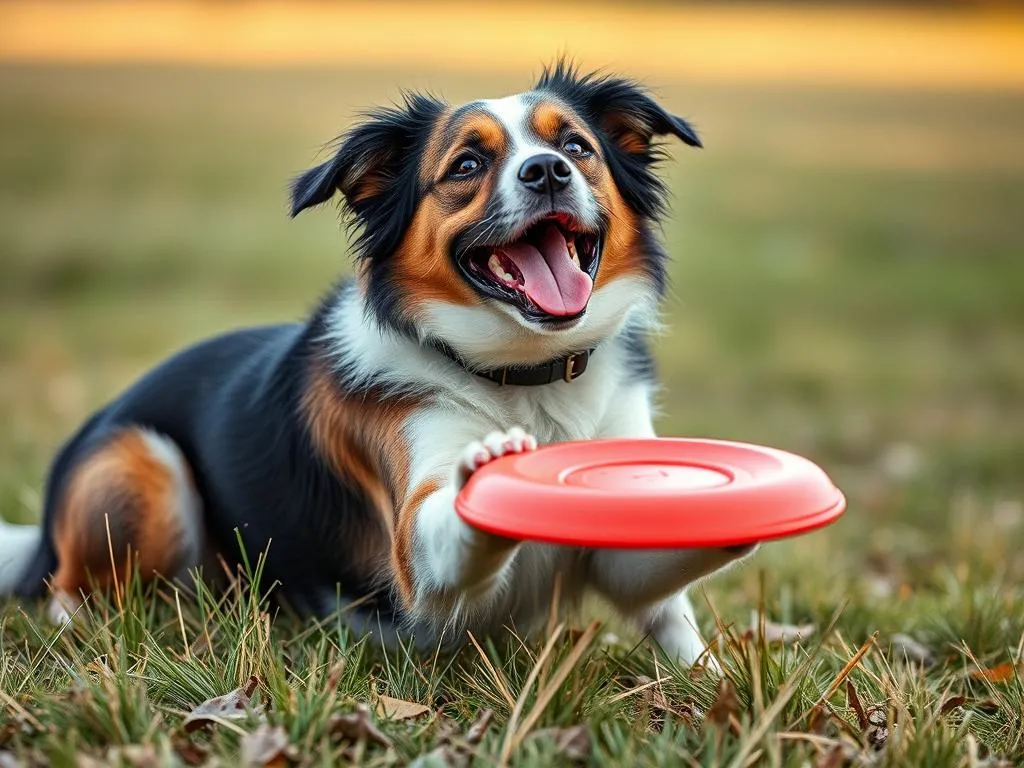
Introduction
In recent years, Frisbee has gained immense popularity as an engaging activity for dogs and their owners. This fun sport not only allows dogs to showcase their athleticism but also strengthens the bond between pet and owner. Playing Frisbee with your dog can be a joyful experience, filled with laughter, excitement, and exercise.
Choosing the right breed for Frisbee is crucial, as some dogs have innate physical abilities and temperaments that make them exceptional in this sport. In this article, we will explore the best dog breeds for Frisbee, their characteristics, training methods, and safety tips. You can expect a comprehensive guide that will help you understand the dynamics of playing Frisbee with your furry friend.
Understanding Frisbee as a Dog Sport
What is Frisbee for Dogs?
Frisbee for dogs, often referred to as disc dog, is a sport that involves throwing a flying disc for dogs to catch. The roots of this activity trace back to the 1970s when trainers began using flying discs to engage their dogs in play. Over the years, Frisbee has evolved into a competitive sport, with various events and competitions held worldwide. Disc dog competitions often focus on distance catching, freestyle routines, and tricks, showcasing the agility and skills of both the dog and the handler.
Benefits of Playing Frisbee with Dogs
Playing Frisbee with your dog offers numerous benefits:
-
Physical Health Benefits: Engaging in Frisbee is an excellent way for dogs to get exercise. It helps maintain a healthy weight and promotes cardiovascular health. Regular physical activity can also reduce the risk of obesity-related diseases.
-
Mental Stimulation: Frisbee is not just about running and jumping; it also requires mental engagement. Dogs learn to focus on the disc, anticipate its trajectory, and strategize their movements, providing both physical and mental stimulation.
-
Bonding Experience: Playing Frisbee strengthens the bond between you and your dog. It creates shared experiences that enhance trust and understanding, leading to a happier relationship.
Characteristics of the Best Dog Breeds for Frisbee
Physical Attributes
When considering the best dog breeds for Frisbee, physical attributes play a significant role. Dogs that are agile, fast, and have good stamina tend to excel in this sport.
-
Size and Weight Considerations: While many breeds can play Frisbee, medium to large dogs typically have the best physical capabilities for jumping and running. However, smaller breeds with high energy can also perform well.
-
Agility and Speed Requirements: The ability to make quick turns, accelerate, and leap high into the air is crucial for catching the disc. Breeds with a natural inclination for agility, such as those used in competitive dog sports, will often perform better.
Temperament and Behavior
The temperament of a dog is equally important in determining its suitability for Frisbee.
-
Playfulness and Energy Levels: Dogs that are naturally playful and energetic are more likely to enjoy and excel at Frisbee. A high drive for play will keep them engaged and motivated.
-
Trainability and Responsiveness: Dogs that are easy to train and responsive to commands will have a better experience in learning Frisbee techniques. Training requires patience and consistency, so breeds that are eager to please tend to excel.
Health Considerations
Health is a vital aspect to consider when choosing a Frisbee dog.
-
Common Health Issues: Certain breeds are predisposed to health issues that could affect their ability to play Frisbee. For instance, hip dysplasia can be a concern for larger breeds, while smaller breeds may have issues related to their joints.
-
Regular Veterinary Check-Ups: Regular vet visits are crucial to monitor your dog’s health, ensuring they are fit to participate in high-energy activities like Frisbee.
Top Dog Breeds for Frisbee
Herding Breeds
-
Border Collie: Known for their exceptional agility and intelligence, Border Collies are often regarded as the top breed for Frisbee. Their natural herding instinct translates well into catching discs, and their energy levels keep them engaged for hours.
-
Australian Shepherd: With their athleticism and high energy, Australian Shepherds are another fantastic choice. They are quick learners and thrive in active environments, making them perfect for Frisbee.
Sporting Breeds
-
Labrador Retriever: Labradors are friendly, intelligent, and have a natural instinct to retrieve. Their playful nature and love for chasing make them excellent candidates for Frisbee.
-
Golden Retriever: Similar to Labradors, Golden Retrievers are high-energy dogs that enjoy playtime. Their eagerness to learn and friendly demeanor makes them great companions in the field.
Terriers
-
Jack Russell Terrier: These small dogs are packed with energy and enthusiasm. Their agility and quick reflexes allow them to leap and catch the Frisbee with ease.
-
Airedale Terrier: Airedales are playful and have great stamina, making them an unexpected but capable option for Frisbee. Their size and strength allow them to perform well in the sport.
Other Notable Breeds
-
Shetland Sheepdog: Quick, obedient, and eager to please, Shelties excel in Frisbee. Their agility and intelligence make them great at learning tricks and catching discs.
-
Vizsla: Known for their high energy and enthusiasm for play, Vizslas are excellent Frisbee dogs. Their athletic build and willingness to engage make them a joy to play with.
Training Your Dog for Frisbee
Basic Obedience Training
Before diving into Frisbee training, it is essential to establish a foundation of basic obedience commands.
-
Importance of Foundational Commands: Commands like “sit,” “stay,” “come,” and “drop it” are crucial for effective communication during playtime. A well-trained dog will be more responsive and easier to manage while playing Frisbee.
-
Tips for Effective Communication: Use positive reinforcement techniques such as treats and praise to encourage desired behaviors. Consistency is key, as it helps your dog understand what is expected.
Introducing Frisbee
Once your dog has a grasp of basic commands, it’s time to introduce them to Frisbee.
-
Techniques to Get Your Dog Interested: Start by letting your dog sniff and play with the Frisbee before throwing it. Use treats to encourage them to chase after it. Gradually introduce the idea of catching.
-
Gradual Introduction to Catching and Retrieving: Begin with short throws and gradually increase the distance. Celebrate their successes to build confidence and enthusiasm.
Advanced Frisbee Techniques
Once your dog is comfortable with basic catching, you can introduce more advanced techniques.
-
Tips for Teaching Tricks and Complex Catches: Incorporate tricks like spins and flips to make the game more exciting. Use a mix of treats and toys to keep your dog motivated.
-
Incorporating Agility Training for Improved Performance: Consider adding agility training to your routine, which can enhance your dog’s speed and coordination. This will help them become even more adept at catching Frisbees.
Safety Tips for Playing Frisbee
Health Precautions
To ensure a safe and enjoyable experience, take health precautions seriously.
-
Importance of Warm-Up and Cool-Down Exercises: Like humans, dogs need to warm up before intense activity. Begin with a light jog or play session to get their muscles ready. After playing, allow your dog to cool down with light walking.
-
Recognizing Signs of Fatigue and Injury: Keep an eye on your dog for signs of fatigue, such as excessive panting or slowing down. If you notice any signs of injury, such as limping or reluctance to play, stop immediately and consult a veterinarian.
Choosing the Right Frisbee
Selecting the right Frisbee is essential for safe play.
-
Types of Frisbees Suitable for Dogs and Their Features: Look for soft, flexible Frisbees designed specifically for dogs. Avoid hard plastic discs, which can cause dental injuries.
-
Recommendations for Durable and Safe Options: Brands that offer durable, chew-resistant, and safe materials are ideal. Consider options that are lightweight and easy for your dog to carry.
Environmental Considerations
The environment where you play can greatly impact your dog’s enjoyment and safety.
-
Ideal Locations for Playing Frisbee: Open spaces like parks, beaches, or large backyards are perfect for Frisbee. Ensure the area is free from obstacles and hazards.
-
Weather Conditions to Avoid: Avoid playing in extreme temperatures, either too hot or too cold. Humidity and rain can also affect your dog’s performance and safety.
Frequently Asked Questions (FAQs)
What are the best ages for dogs to start playing Frisbee?
Most dogs can start playing Frisbee as early as six months old, but it’s essential to ensure they have developed the necessary physical and mental maturity. Consult your veterinarian for personalized advice.
Can any dog breed play Frisbee?
While many breeds can enjoy Frisbee, not all are equally suited for the sport. Breeds with higher energy levels, agility, and a playful temperament tend to excel.
How often should I play Frisbee with my dog?
Aim for several short sessions each week, gradually increasing the duration as your dog builds stamina. Always monitor their fatigue levels and adjust accordingly.
What to do if my dog doesn’t like Frisbee?
If your dog shows disinterest, try to find other toys they enjoy. You can also use treats to build excitement around the Frisbee. Patience and encouragement are key.
Conclusion
In summary, playing Frisbee with your dog can be a rewarding experience that promotes physical health, mental stimulation, and a deeper bond between you and your furry friend. Understanding the characteristics of the best dog breeds for Frisbee can help you choose a suitable companion for this energetic sport. Through proper training and safety measures, you can enjoy countless hours of fun and play.
So grab a Frisbee, head outside, and experience the joy of playing with your dog. You may discover a new favorite pastime that will keep both you and your dog active and happy!









